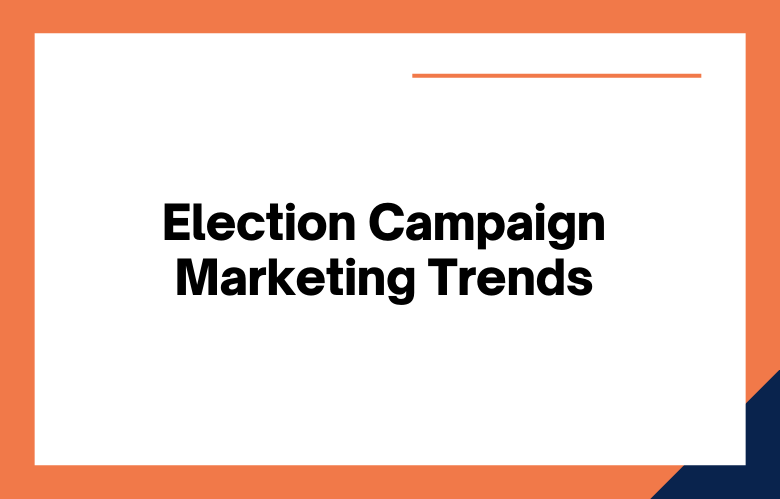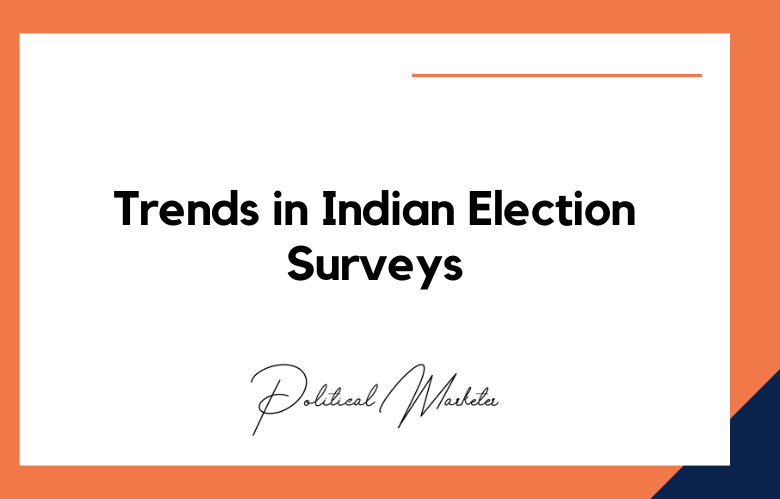It’s interesting what might happen in the world of politics. With the next US Presidential election less than three years away, it’s time to start thinking about what trends will dominate the campaign trail. Here are four things that could very well shape the race come 2024.
What will the election campaign trends be in 2024? Some say that social media will play a significant role, while others predict that more targeted advertising will be used. No one can know, but seeing how things change from now until then will undoubtedly be interesting! In the meantime, let’s look at some things we might expect to see.
Election Campaign Marketing Trends for 2024
- 2020 saw the rise of third-party candidates
- The Democratic and Republican parties are looking to consolidate their power in 2024
- As a result, we see more bipartisan campaigns and less polarization than before
- Candidates must be able to appeal to both sides of an issue; for example, gun control may mean supporting universal background checks but not taking away people’s guns.
- Campaigns will be shorter and more frequent
- Candidates will focus on their strengths
- Voters will be able to vote for candidates in other states or countries
- The media landscape has changed with the rise of digital journalism and social media engagement
- It’s doubtful that any third-party candidates will attempt to run in the election due to the high cost of campaigning and voter apathy
- Candidates will focus on the economy and job creation
- There will be a push for more regulations to protect consumers and workers
- The environment will also become an important topic, with candidates promising to reduce carbon emissions and make America a leader in renewable energy
- The number of women running for Congress is at an all-time high
- More people are getting their news from social media rather than TV or newspapers
- Candidates are using more data to target voters and get out the vote
- With the 2020 election approaching, there are already dozens of candidates vying for their party’s nomination
- More focus on social media
- Increased use of targeted messaging, with a focus on specific demographics and geographies
- Greater reliance on digital advertising
- Candidates are more likely to be younger than they were in previous elections
- The number of female candidates is on the rise, but not at the same rate as male candidates
- Campaigns are focusing less on social media and more on traditional methods like TV ads and public appearances
- More people are voting by mail-in ballot
- 2020 was a record year for political donations
- The number of people who voted in the last presidential election is at its highest point since 1996
- In 2020, there were more independent voters than ever- almost half of all voters identified as separate or unaffiliated with any party.
- Millennials are the largest voting bloc and have historically been less likely to vote than other generations.
- Candidates are more likely to be younger, female, and diverse
- There is a higher chance of third-party candidates running for office (due to the rise in the popularity of third parties)
- Campaigns will focus on social media as well as traditional methods like TV ads
- Candidates will use more personal narratives rather than policy positions
- Candidates are increasingly using social media to reach voters
- Campaigns focus on issues rather than personality or party affiliation
- There will be a more significant focus on environmental issues because of climate change
- As a result of the current political climate, there will likely be a substantial change to how voting works by 2024
- Social media campaigns are the most popular type of campaign
- Campaigns with a solid call to action are more successful than those without one
- The majority of social media posts are images, videos, or links to other content
- Facebook is still the dominant platform for political engagement and discussion
- Twitter is gaining ground as an essential tool for candidates looking to reach voters who do not use Facebook
- Campaigns are expected to spend more on social media advertising than television ads for the first time
- Candidates are expected to focus heavily on immigration reform and healthcare
- The internet is the new battleground
- Social media will be a significant factor in campaigning
- Millennials are more likely to vote than any other age group, so they should be targeted
- Candidates will need to create content that resonates with their target audience and reach out via social media or email for donations
- Campaigns will have to maintain an online presence at all times, even after the election is over
- The emergence of social media as a viable platform for campaigning
- Increased personalization in campaign ads, with more focus on how the candidate’s policies will affect voters’ lives
- A stronger emphasis on traditional methods of campaigning, such as door-to-door canvassing and phone banking
- Campaigns that are less focused on hostile rhetoric
- Movements will be less about the candidate and more about what they can do for voters
- Candidates will use social media to engage with voters and advertise their values and beliefs
- Candidates will need to tailor their messages specifically for different regions of the country or world
- As a result, candidates who can adapt quickly, speak multiple languages or have solid regional ties stand out
- Candidates will have to be more personable and show a personal side to their public image
- Campaigns will focus on social media outreach, targeting specific demographics with tailored messages
- Some candidates may opt for an “unplugged” drive- no TV ads, billboards, or other traditional forms of campaigning
- Campaigns will need to create a digital footprint to win over younger voters who are less likely to vote
- Increasing use of video
- Younger voters will be more influential than ever before
- There is less focus on traditional advertising and more on digital marketing
- Increase the number of social media followers
- Create a Facebook Page that is tailored to your target audience
- Post content on Instagram that will resonate with your target audience, including pictures and videos of their favorite things
- Use search engine optimization (SEO) techniques to help people find you when searching for information about political candidates on Google or Bing.
Conclusion
If you intend to dominate the market, it’s time to start thinking about implementing these trends. With an election in 2024, now is the perfect time to think about your marketing strategy and what can be done today to set you apart from other candidates.
Contact us if you need help with any aspect of your campaign – our team has years of experience creating successful strategies for clients who want their business or organization to win elections. Let’s make this year one where everyone knows your name!
Call: +91 9848321284
Email: [email protected]










